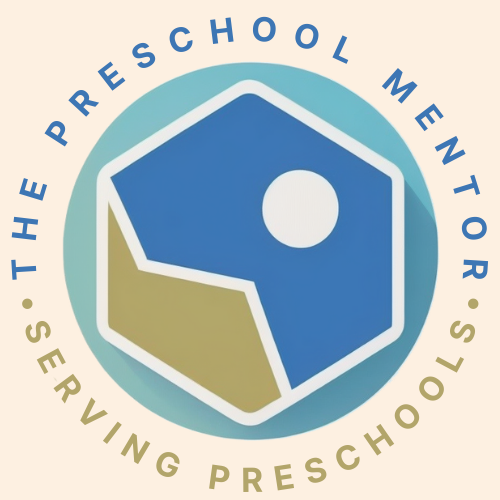From the very moment they are born, children are immersed in a highly social world. This includes parents, siblings, classmates, and teachers as well as values and objects that are part of their culture. All of these offer a context for the cognitive development and growth of a child.
Preschooler’s thinking skills will undergo many changes between the ages of three and five. Their ability to use representational symbols and thoughts to symbolize events, objects, and people, which started in childhood is now becoming much more complex. They start to use logic to think about why and how the world around them works.
Despite the major cognitive gains during the preschool years, they are actually not little adults and still have lots of cognitive limitations. Preschool teachers play a major role in the cognitive development of preschoolers. By having an understanding of these advances and limitations in thinking, teachers are better able to support the cognitive growth of preschoolers.
One of the best ways for teachers to engage the thinking skills of preschoolers is by reading quality children’s books that promote things like problem solving, reasoning, metacognitive knowledge, symbolic play, social cognition, knowledge, and memory. Following, you will find a few teaching methods, recommendations for books, and activities that you can use in your classroom to encourage cognitive development.
Reasoning & Problem Solving
During the preschool years, children begin attempting to learn and explain why things happen and how they work. While these explanations may seem a bit far-fetched for adults, the stream of their how and why questions reveal a true desire to reason/solve problems about the causes of events.
In order to hone in on this natural curiosity of three to five year olds, preschool teachers should be posing though provoking questions while they are reading to their students. For example, “The Very Hungry Caterpillar” by Eric Carle is a great time to ask children how and why animals change. Teachers should be helping children to understand these natural phenomena in order to push cognitive development beyond seeing the superficial changes in appearance- which is a cognitive limitation that is typically displayed during these years.
Another technique that can be used by preschool teachers to promote problem solving and reasoning skills is to use a book to introduce a problem-solving activity. For example, after reading “Building a House” by Byron Barton, “How a House is Built” by Gail Gibbons, or “Houses & Homes Around the World” by Ann Morris, teachers can bring out “building” materials such as paper, straws, glue, and craft sticks- and encourage them to figure out how to build their own house with the resources given to them.
Symbolic Play
One of the major developments in the thinking process during this time is the ability of a preschooler to engage in symbolic play. For example, they may use a block as a telephone, or a box for a car. Preschoolers are beginning to understand the difference between real and fantasy- unlike toddlers.
During the preschool years, teachers should be encouraging make-believe play. Since children identify with characters in books, reading stories to them that show other children or characters participating in symbolic play is a great way to inspire your students to take part in pretend play in new/unique ways.
One great book to stimulate the imagination of your preschoolers is “Have Fun, Molly Lou Melon” written by Patty Lovell. The main character in this book, Molly Lou, doesn’t need television or fancy toys to have fun. Instead, she makes her own fun by making dolls out of twigs and looking for pictures in the clouds. Two other books by Antoinette Portis: “Not a Stick” and “Not a Box” show some great ways to have fun playing pretend with simple objects. After reading these, teachers can give students their own stick or box and let them come up with creative ways to play on their own.
Metacognitive Knowledge
The term metacognition refers to the way an individual thinks about their own thought process. Being able to monitor their own learning or using mnemonic strategies is basic for young children. For example, a preschooler understands that it’s much easier to remember a small list versus a long list of items, but they’re not going to spontaneously use rehearsal strategies to remember the list. It’s not until beyond the preschool years that children become aware of strategies that have an influence their learning and memory.
As a preschool teacher, you can encourage your students to reflect on their own learning and thought processes by allowing some extra time for a post-reading activity. For example, after reading “The Berenstain Bears’ Dollars & Sense”– a book in which Brother and Sister bear learn more about spending and saving money, you can ask your students to draw a picture about a time that they learned something new. In addition, you can ask each student- one by one- to name something new they learned from the book. Try writing their responses on a whiteboard so that they better understand the individuality of their learning and thought processes.
Memory
The memories of a preschooler are affected by what they knew before. At this age, children are able to remember new ideas and concepts easily when they already have some knowledge about the subject at hand than when they have little to no knowledge of the topic.
Children between the ages of 3 to 5 are also more likely to remember a new concept when it’s put into meaningful context- or if they are taught through hands-on experiences. Following are a few things that you can do while reading to your students to help with memory formation:
- Make some connections from the story you are reading to their personal experiences. For example, if you are reading a book such as “The Big Red Barn” by Margaret Wise Brown– ask your students to think about and tell about a time when they visited a farm.
- Ask a few questions that require your students to remember an earlier part of the story- such as: what happened at the beginning?
- Reiterate some of the important concepts. After all, you know that children learn through repetition. Therefore, hearing new information more than one time will help ensure that they can learn and remember it.
In addition, you might want to think about reading books related to a particular topic before introducing new concepts related to it. For example, if you are planning to do a fall activity with the class involving dissecting a pumpkin, you might want to try reading a book by Jeanne Titherington, called “Pumpkin, Pumpkin.” This book explains the life cycle and various parts of a pumpkin. This gives your students a base so that while they are participating in the hands-on activity, the new learning/experiences will fall to their current understanding of pumpkins.
Social Cognition
The term “social cognition” refers to how an individual thinks about others and social situations. As children develop new cognitive skills, their understanding of the social aspect of the world begins to grow. By the time they reach the preschool years, children have an understanding of the mind as the area where thought comes from and are beginning to be able to understand why others feel or behave the way they do. This ability is known as “theory of the mind,” and while preschoolers begin to show this ability, they are still limited in how much they can understand the perspective of others. However, throughout the preschool years, as children begin to increase in their ability to communicate, this “egocentric thought” declines.
Reading books to your students about feelings and how those feelings relate to behaviors and thoughts is a great way for you as a preschool teacher to promote social cognition. Some examples include “Stand in My Shoes: Kids Learning about Empathy” by Bob Sornson, Ph.D. or “Alexander and the Terrible, Horrible, No Good, Very Bad Day,” by Judith Viorst.
Advances in children’s cognitive development during the preschool years allows them to be able to communicate and play in ways that they were unable to during toddlerhood. When teachers have some knowledge of cognitive development during the preschool years and carefully plan their curriculum, they can promote this cognitive growth through everyday activities like circle/story time. Increasing a child’s thought process is as easy as opening a book and using these tips!
Image Credit: readbrightly.com


Leave a Reply